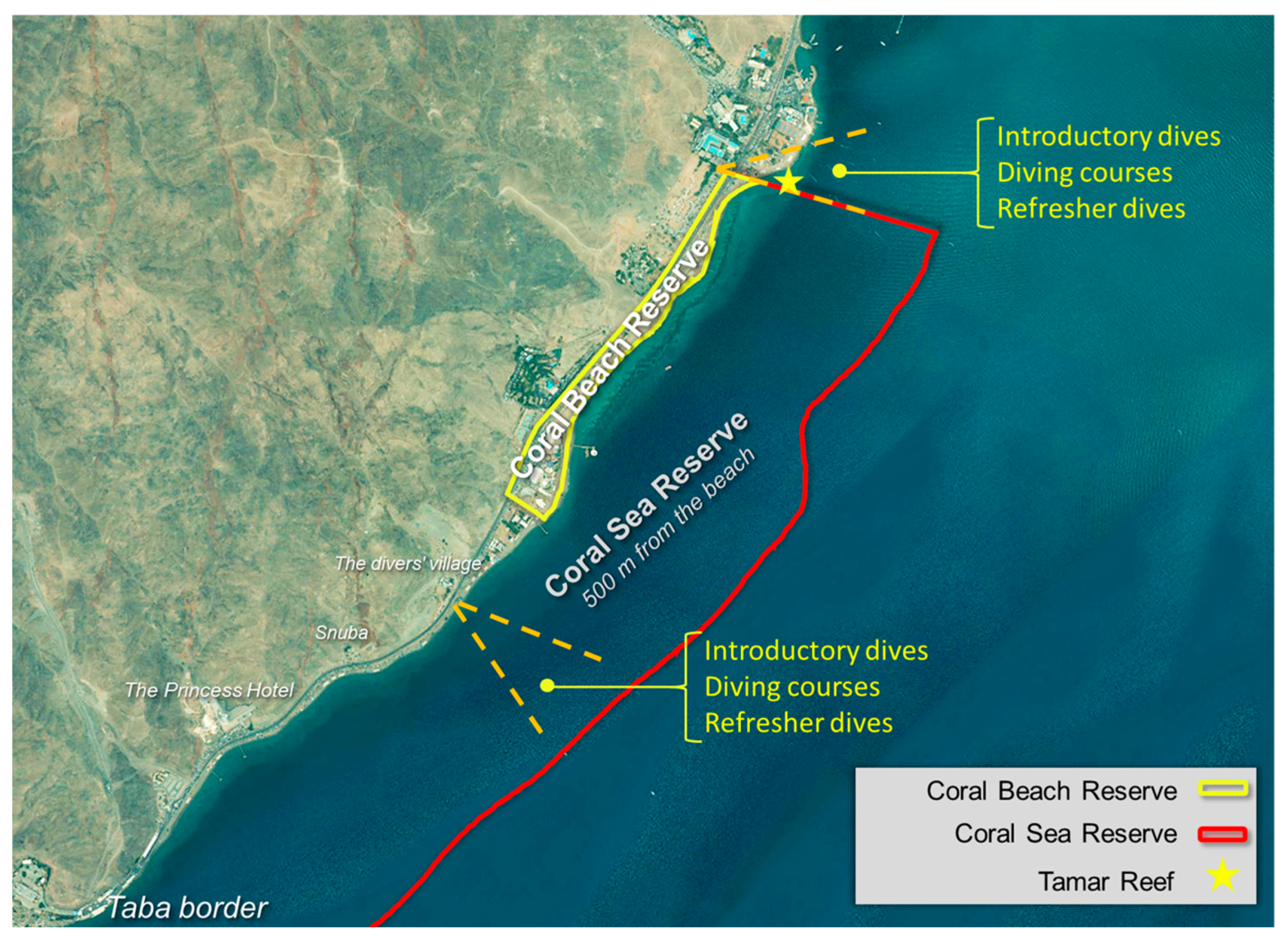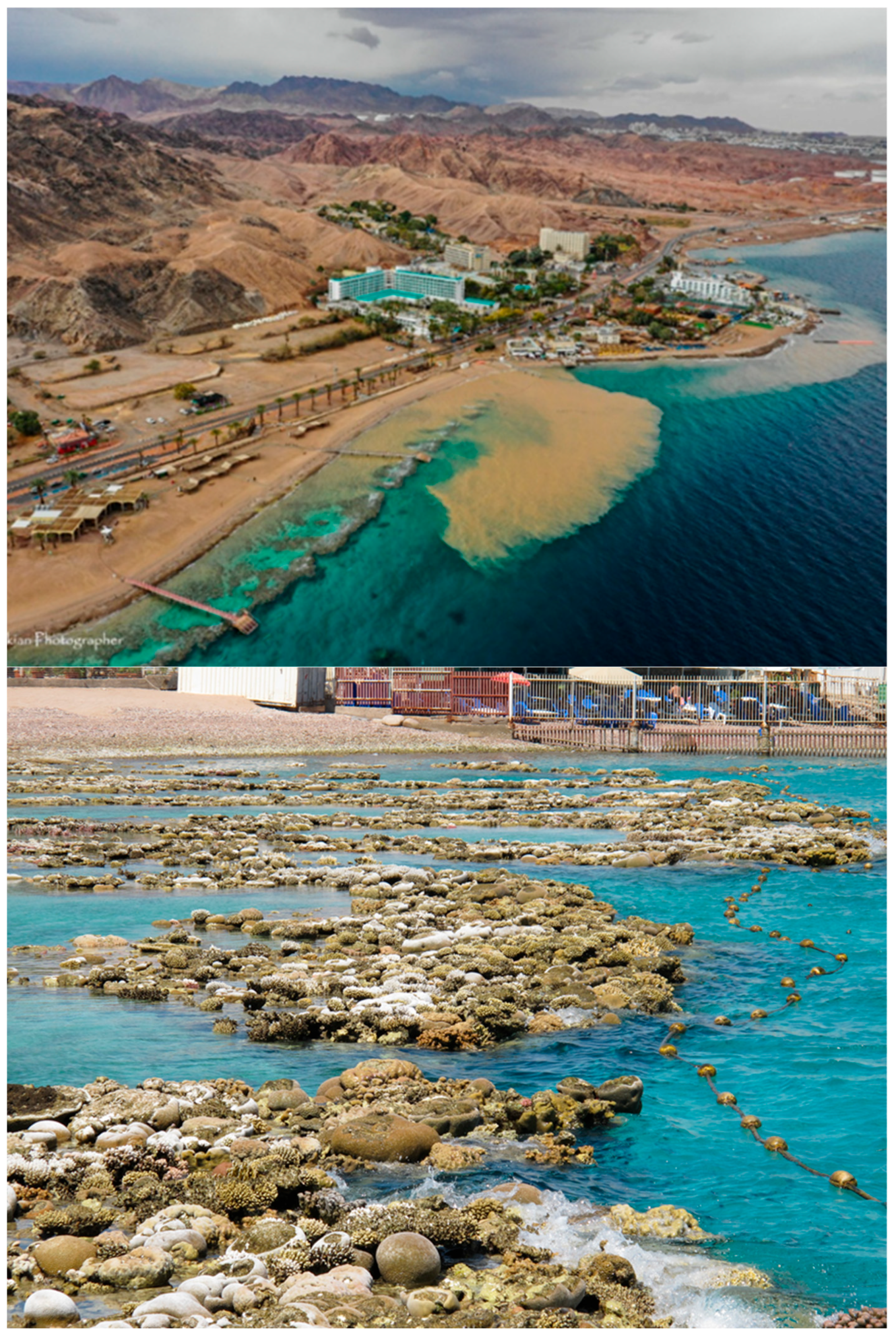Comment on Shashar et al. Artificial Reef Deployment Reduces Diving Pressure from Natural Reefs—The Case of Introductory Dives in Eilat, Red Sea. Oceans 2024, 5, 71–80
1. Introduction
2. Comments
3. Conclusions
Author Contributions
Funding
Institutional Review Board Statement
Informed Consent Statement
Data Availability Statement
Acknowledgments
Conflicts of Interest
References
- Shashar, N.; Oren, A.; Neri, R.; Waizman, O.; Chernihovsky, N.; Tynyakov, J. Artificial Reef Deployment Reduces Diving Pressure from Natural Reefs—The Case of Introductory Dives in Eilat, Red Sea. Oceans 2024, 5, 71–80. [Google Scholar] [CrossRef]
- Zakai, D.; Chadwick-Furman, N.E. Impacts of intensive recreational diving on reef corals at Eilat, northern Red Sea. Biol. Conserv. 2002, 105, 179–187. [Google Scholar] [CrossRef]
- Huth, W.L.; Morgan, O.A.; Hindsley, P. Artificial reef attributes and the relationship with natural reefs: Evidence from the florida keys. J. Ocean. Coast. Econ. 2015, 2, 2. [Google Scholar] [CrossRef]
- Nichols, R.S. Effectiveness of Artificial Reefs as Alternative Dive Sites to Reduce Diving Pressure on Natural Coral Reefs, A Case Study of Koh Tao, Thailand. Ph.D. Thesis, University of Cumbria, Cumbria, UK, 2013. [Google Scholar]
- Klein, R. Tamar’s Reef. Prima Vista 2014. Available online: https://www.ramyklein.co.il/page95.html (accessed on 14 July 2024).


Disclaimer/Publisher’s Note: The statements, opinions and data contained in all publications are solely those of the individual author(s) and contributor(s) and not of MDPI and/or the editor(s). MDPI and/or the editor(s) disclaim responsibility for any injury to people or property resulting from any ideas, methods, instructions or products referred to in the content. |
© 2025 by the authors. Licensee MDPI, Basel, Switzerland. This article is an open access article distributed under the terms and conditions of the Creative Commons Attribution (CC BY) license (https://creativecommons.org/licenses/by/4.0/).
Share and Cite
Zvuloni, A.; Shaked, Y. Comment on Shashar et al. Artificial Reef Deployment Reduces Diving Pressure from Natural Reefs—The Case of Introductory Dives in Eilat, Red Sea. Oceans 2024, 5, 71–80. Oceans 2025, 6, 23. https://doi.org/10.3390/oceans6020023
Zvuloni A, Shaked Y. Comment on Shashar et al. Artificial Reef Deployment Reduces Diving Pressure from Natural Reefs—The Case of Introductory Dives in Eilat, Red Sea. Oceans 2024, 5, 71–80. Oceans. 2025; 6(2):23. https://doi.org/10.3390/oceans6020023
Chicago/Turabian StyleZvuloni, Assaf, and Yonathan Shaked. 2025. "Comment on Shashar et al. Artificial Reef Deployment Reduces Diving Pressure from Natural Reefs—The Case of Introductory Dives in Eilat, Red Sea. Oceans 2024, 5, 71–80" Oceans 6, no. 2: 23. https://doi.org/10.3390/oceans6020023
APA StyleZvuloni, A., & Shaked, Y. (2025). Comment on Shashar et al. Artificial Reef Deployment Reduces Diving Pressure from Natural Reefs—The Case of Introductory Dives in Eilat, Red Sea. Oceans 2024, 5, 71–80. Oceans, 6(2), 23. https://doi.org/10.3390/oceans6020023





